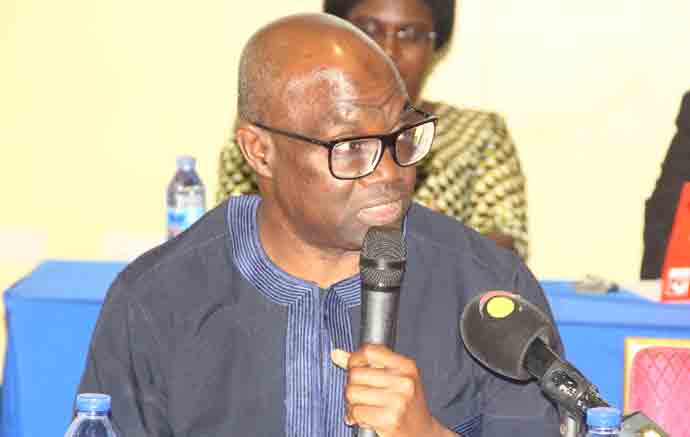
"By 2025 Internet nodes may reside in everyday things--food packages, furniture, paper documents, and more. Today's developments point to future opportunities and risks that will arise when people can remotely control, locate, and monitor even the most mundane devices and articles. Popular demand combined with technology advances could drive widespread of an Internet of Things (IoT)"
Core technology is explained as a system that allows people and organizations to process and manage performance more consistently with the help of computer hardware and software solutions such as data management, communications infrastructure and applications, cyber infrastructure, mobile strategy and application development.
Core technologies can be in the form of hardware or software. Hardware can be in forms such as cyber infrastructure, communication infrastructure and devices, telephony and mobile devices, and computers and community networks.
Examples of core software technologies are eLearning Management Solutions such as Moodle, Blackboard, Desire2Learn, eCollege, Sakai, and WebGuru; Enterprise Resource Planning Systems such as Academia ERP, Agresso; Content Creation and Management Portfolios such as Adobe Creative Suite , Intel® Education Software, and FileMaker Solution for mobile devices; Research, Assessment, and Evaluation Tools such as IBM SPSS Solutions for Education , SurveyMonkey, and LimeSurvey.
Most progressive university administrators (especially in Western countries) and practitioners use The EDUCAUSE Learning Initiative (ELI) and the New Media Consortium (NMC) Horizon report as a springboard for discussion around significant trends and challenges. The ELI and NMC recent Report identifies six (6) core technologies that will change higher education. These technologies are separated into three timeframes (called Horizons) that the authors think will match when each technology will enter mainstream use.
According to the Report, Massive Open Online courses (MOOCs) and tablet computing are technologies expected to enter mainstream use in the first horizon (timeframe of one year or less), games/gamification and learning analytics for the second horizon (two to three years), and 3-D printing andwearable technologies for the third horizon (4-5 years).
According to Larry Johnson, chief executive officer of the NMC,"... the biggest trend identified by the advisory this year reflects the increasing adoption of openness on and beyond campuses, be it in the form of open content or easy access to data. This transition is promising, but there is now a major need for content curation."
For example, MOOCs are attracting students from all works of life to take these courses. Companies such as Coursera, Class Central, MIT, Harvardx, and Udacity are spearheading this initiative by offering free non-credit courses on line from universities such as Stanford, MIT, CalTech, Princeton and some of the open universities.
MOOCs could lead to significant new options in higher education when issues with credits and accreditation are resolved. Needy parents and students may find this new trend attractive and cost-effective for their higher educational needs.
Tablet computing has also emerged as one of today's core technologies in higher education. Steve Jobs of Apple Computers used the term "the post PC era" to describe a trend in the consumer electronics industry, where the use of a personal computer (PC) as the primary form of technology is declining in favor of other devices such as smartphones and tablet computers-along with a greater shift towards the use of cloud-based mobile and cross-platform Web application as an alternative to applications that can only be used on a PC. The launch of the iPad in April of 2010 by Apple ushered in the era of tablet computers. The iPad was the first mobile tablet computer to achieve worldwide commercial success. There was a widespread adoption of the device and from this a new generation of 'Post PC' tablet computers began to appear. Manufacturers such as Samsung, HTC, Motorola, Blackberry, Sony, Amazon, HP, Microsoft, Google, Toshiba, and others have produced tablets of their own.
With the surge in popularity for post-PC devices, we've since a shift from the use of PCs to tablets and other related devices such as Amazon Kindle fire, Banes and Nobles Nook, the Kobo and other forms of eReaders.
A flipped class is one that inverts the typical cycle of content acquisition and application so thatstudents gain necessary knowledge before class, and instructors guide students to actively and interactively clarify and apply that knowledge during class. The model is designed to engage students in basic course content in the form of prep or homework outside of class. Class time is devoted for deeper engagements and hands-on applications. Students continue to apply the acquired knowledge and skills after class, and are graded accordingly.
Zichermann and colleagues define gamification as the use of game thinking and game mechanics in a non-game context to engage users and solve problems. The term is attributed to Nick Pelling, a British-born computer programmer and inventor. Gamification integrates games in higher educational classroom for the development of critical thinking and problem solving skills. Some visionaries, like game designer Jesse Schell, envision a kind of gamepocalypse, a hypothetical future in which everything in daily life becomes gamified, from brushing one's teeth to exercise. The use of gamification in education is said to increase interactivity & rewards (students will be involve in a task instead of just reading text); increase awareness, and reward challenging tasks.
Learning analytics (LA) is generally regarded as the use of intelligent data, learner-produced data, and analysis models to discover information and social connections, and to predict and advise on learning. EDUCAUSE defines LA as "the use of data and models to predict student progress and performance, and the ability to act on that information". It uses student-specific data to design customized courses and resources, and it is geared toward improving performance through coaching and retention.
For competitiveness, a higher educational institution, particularly in Africa, has to explore and integrate (fully) both hardware and software solutions designed and customized to manage its business and day-to-day activities of administrators, faculty, students and the entire university community now and in the future.
Nana Prof. Osei Darkwa, President
African Virtual Campus
Read Full Story





















Facebook
Twitter
Pinterest
Instagram
Google+
YouTube
LinkedIn
RSS